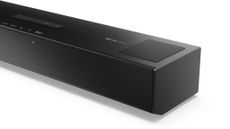The best TVs have an Eco mode to save energy, as do many of the best washing machines, best tumble dryers and best microwaves. If like me you're horrified by the rising cost of energy, it's tempting to run eco mode on absolutely everything you can. But while it can save you money, it's not always the best option. Here's why.
What does Eco Mode actually do?
That depends on the appliance. On my microwave, it turns off the clock display; on my washing machine, it runs at a lower temperature for longer (because most of the energy use in washing is in heating the water). And on my Samsung TV it makes it really hard to see what's happening on screen.
The problem with Eco mode in products such as TVs is that they can very aggressive, reacting to the slightest bit of ambient light by dimming the display a little too much. That's because display brightness, just like it is in the best phones, is the biggest and most obvious way to reduce the amount of energy you're using – so the dimmer it makes your TV, the less energy it's consuming. But if it's too aggressive it's particularly noticeable with HDR content: the whole point of HDR is the contrast between the very darkest and very lightest areas, and auto-dimming often feels like it's turning the HDR off altogether. Not ideal if like me the whole point of getting a new TV was to get the best possible picture quality and contrast.
It's not a problem for all TVs. Dolby Vision IQ and HDR10+ adaptive are designed to keep your HDR picture quality no matter how bright your display. But a lot of TVs' eco modes are overly simplistic and you might find you get better results by manually adjusting the display settings instead. Or by closing the curtains and turning the brightness down manually.
How much money does eco mode actually save you?
Again, that depends on the device. According to Which? a dishwasher with eco modes costs about £40 a year to run at current energy prices; models without can cost up to £75 annually. A typical family's washing machine costs between £55 and £100 a year to run (depending on how frequently you wash), and eco modes can reduce that by £10 to £20. Putting my microwave into Eco mode will save me a whopping £1 per year.
And your TV? That depends on its size, tech and energy rating. A 55-inch, G-rated LED TV will cost about £20 a year; the same QLED, around £15. Move up to a 75-inch LED and you're looking at £34 annually or about £21 for a QLED. Eco modes will typically reduce consumption by around 30%, rising to 50% if you're watching with the lights off.
Realistically, then, eco modes don't do a lot individually. But collectively it all adds up, so £30 on the dishwasher, £10 on the TV, £20 on the washing machine and £1 on the microwave isn't insignificant – and with prices continuing to rise, it could become even more significant if it's part of a bigger picture that also includes smart thermostats, smart lighting and other energy saving measures.



